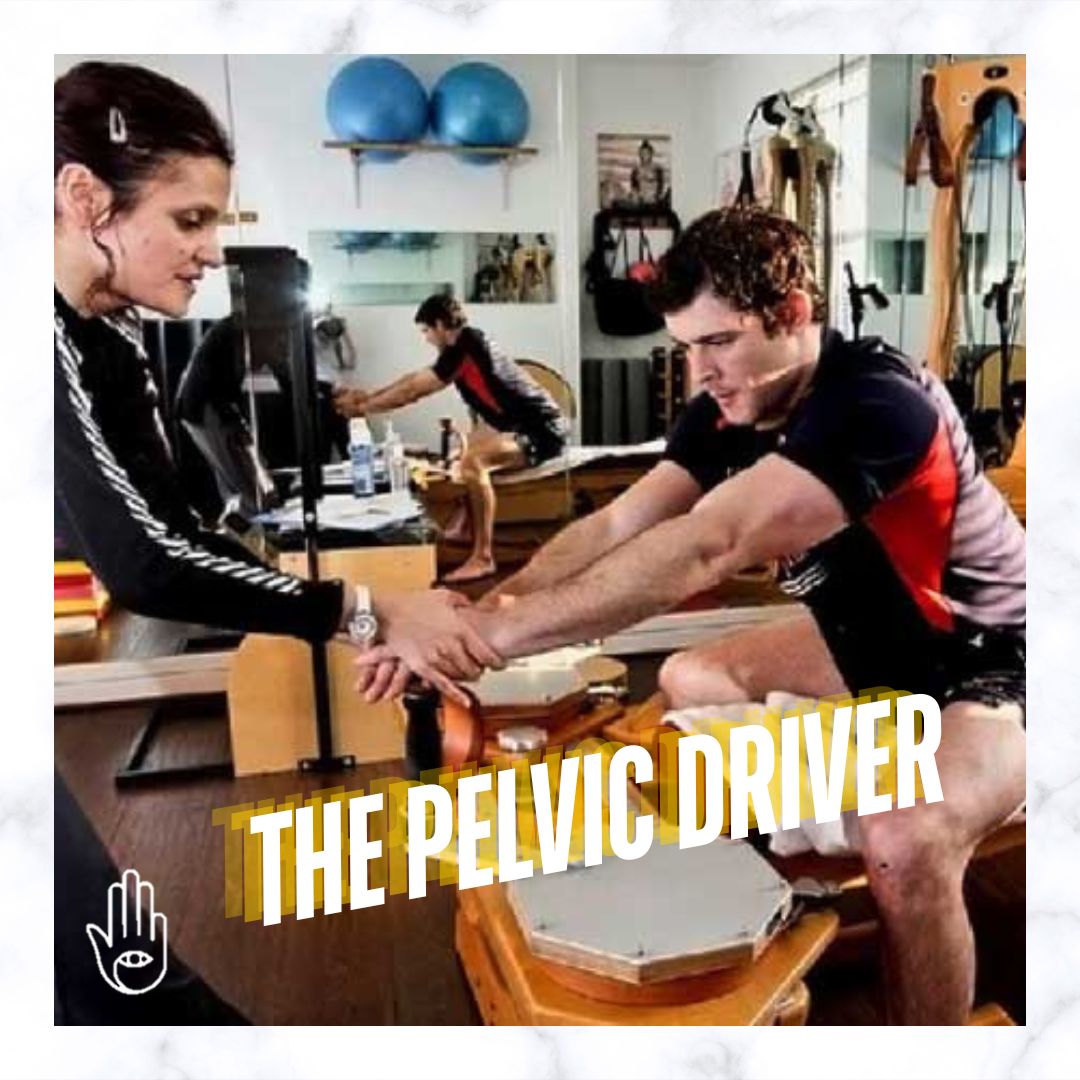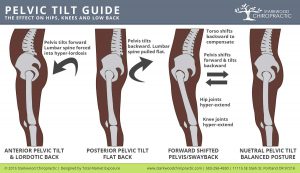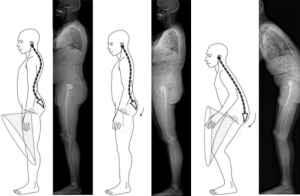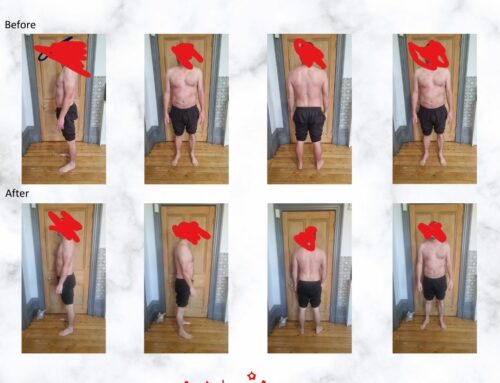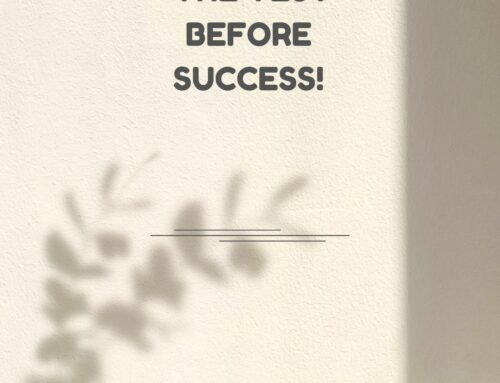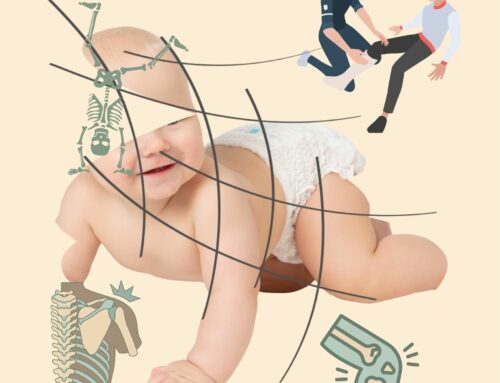Wow what a vast subject, don’t know where to start, here is just a snippet of what many others and I call: “The Pelvic driver’. The Pelvis being a large basin, is one of the leading areas of power in sports biomechanics as well as basic gait pattern. It also houses some of the most important organs to our life force (prana) in the body.
 Every single one of us is made up of a mass of cells and we are completely different in our structure, movement patterns and the way we move. Ask a group of people to sit down onto the floor and then stand up again, they are all completely different. It is said that the older you get, the more you need to use your hands to stand up. Count the number of times your hands touch the floor, the less they touch the mobile and fitter you are.
Every single one of us is made up of a mass of cells and we are completely different in our structure, movement patterns and the way we move. Ask a group of people to sit down onto the floor and then stand up again, they are all completely different. It is said that the older you get, the more you need to use your hands to stand up. Count the number of times your hands touch the floor, the less they touch the mobile and fitter you are.
Could it also be our conditioning that affects the we move? Our conditioning influences our body right from our childhood environment to the people, things and places which we carry through to later life. It brings us to the argument, is posture habitual or structural ?
Below is what I commonly see in my studio- posterior, anterior, shifted and lateral pelvic tilt.
The pelvic girdle is formed by two layers of innominate bone, which meet in front of the symphasis pubis and articulate with the sacrum and coccyx, from the pelvis, which surrounds the pelvic cavity. The pelvis of the female is wider and shallower than that of the male. Each innominate bone is formed by a fusion of the three points- the ilium, ischium and the pubis. At the junction of these is a socket for the head of the femur. According to Chek measurements a woman pelvis should be 7-10 degrees and a man 4-7 degrees of tilt.
Surrounding connective tissues and muscles can overwork, causing strain. If it is overworked regularly this can cause imbalance of the skeletal structure. It is commonly assumed that overworked muscle areas need stretching and underworked muscle areas require strengthening of the body to begin a position of balance and equilibrium.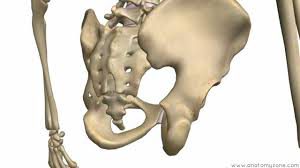
The hip flexor region has an incredible effect on the body’s structure, especially posture. For e.g the thigh muscles are the largest group of muscles in the body, they tend to do a lot of work without any conscious effort involved.From when we are babies with our legs in the air, to the time we crawl, to the time we walk, run or jump, the thigh muscles are continuously engaged as in the rest of the body.
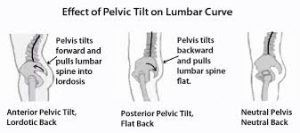 Continuously over exposing these muscle areas to over exertion without opposite relief (such as stretching) can cause problems including back pain as we grow into adulthood.
Continuously over exposing these muscle areas to over exertion without opposite relief (such as stretching) can cause problems including back pain as we grow into adulthood.
When the muscles of the upper thigh are dominate they tend to tilt the pelvis into anterior forward position. This in turn, tends to create a small arch in the lower back lengthening the lower abdominals and causing the hip flexors to become over excited and also stretch and accentuate the arch in the small of the back. Although the mid and upper abdominal may appear flat, they may not be working hard enough to counter the strength in the hip flexors that pull the spine forwards. The imbalance can cause considerable back pain.
Newton’s third law of motion: “For every action, there is an equal and opposite reaction”. The organs are also housed within the pelvis, every nerve ending leads out into muscle and fascia connective tissue and vice versa. There may be some inflammation in the gut, small and large intestine too, plus fungus and parasites.
Here are some exercises, asanas and movement patterns that I presently use to create balance in and around the pelvic driver. My best results of mobilisation are from the GYROTONIC® pulley tower, as the practitioner learns to move the head of the femur away and towards the ASIS without knowing it .
When doing Yoga asana I would hold the pose as long as your body is opening. Once the limit of openness has been obtained, several changes take place. Your spine will begin to shorten, your breath will lose its fullness and your mind will no longer be held on one focal point of awareness, by being alert to anyone of these signs you can optimise the benefits in asana. I love the crescent lunge as a hip opener, as everything above (including the spine) and below the pelvis will affect the release and relax the connective tissues.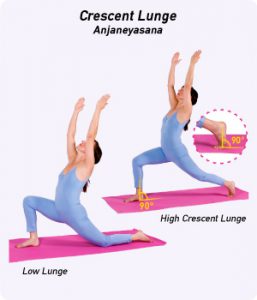
Contrary to popular belief, muscles do not stretch; rather they relax as a neurological reflex in reaction to the contraction of their opposing side. What we feel when we say we are stretching is the release of residual muscle contraction to the stretch of the fascia fibres surrounding the muscle tissue. Sometime the feeling of stretch is more the sensation of heat or even the burn. Jane Fonda was well known for her instruction of this back in the eighties. The burn is the connective tissue fibre that surrounds each muscle releasing its hold on the adjacent muscles. The connective tissue fibre that surrounds each muscle releases its hold on the adjacent connective tissue.
The semi circle from the reformer is another favourite of mine, as I can adjust the foot bar height depending on the tightness in and around the hips. The constant flow of this exercise enables the client to focus on the breath which in turn helps both to both strengthen, release and relax the full body.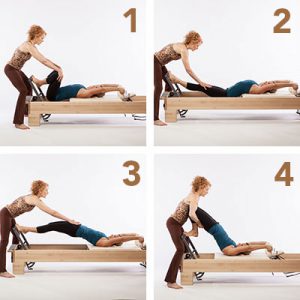
As you can see in all of the above and I always state this, “the body works as a full kinectic chain” so everything is linked.
“Be at least as interested in what goes on inside you as what happens outside. If you get the inside right, the outside will fall into place.” ~ Eckhart Tolle

